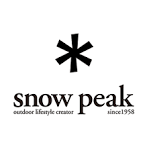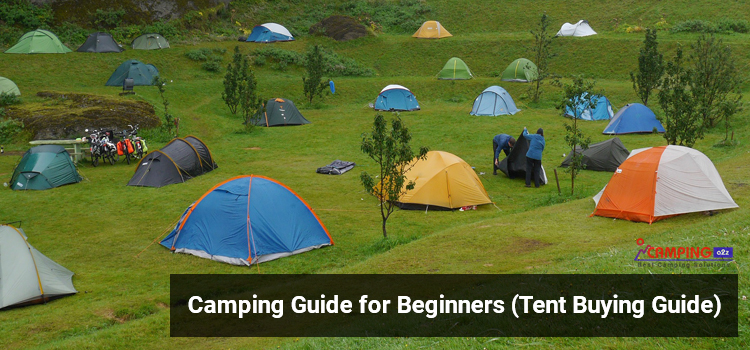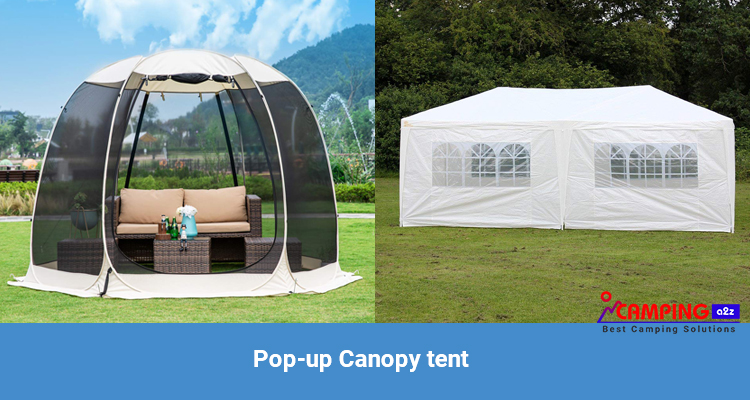Tents are an essential piece of gear for any camper, but with so many different options on the market, it can be tough to know where to start. This guide will help you choose the best tent for your needs, whether you’re a first-time camper or a seasoned pro.
We’ll cover everything from tent size and shape to materials and features, so you can find the perfect tent for your next camping trip. I’ll also provide some tips on how to care for your tent so it will last for years to come.
What are the types of camping tents?
Although there are many outdoor tents on the market, there are many types, but according to the shape, there are only three types: dome-type tents, family tents, round-house tents.
Dome tent
Because the shape of the roof is like a ball, it is called a dome-type tent, also known as a yurt-type tent. It is a relatively small tent.
Compared with other types of tents, dome tents are more convenient to install and set up, even if only one person can assemble them. Moreover, because of its small size, it is easier to carry. However, its performance is not as good as other types of tents. In addition, the ceiling height of such tents is relatively short, which makes people feel pressured.
Dome tents are suitable for short-term camping, and this type of tent is the most diverse in the market.
Family tent
Compared with dome-type tents, family tents have great advantages in size. They can even have living rooms and bedrooms, also known as villa-type tents, which are very suitable for long-term outdoor camping.
Compared with other tents, the family account has a wide interior space that can accommodate multiple people at the same time, and the height of the top is also high, which has a high degree of comfort.
However, this type of tent is known for its many parts, and its volume is not small. It is somewhat inconvenient to handle. Coupled with how to store these things usually is also very disturbing.
Roundhouse tent
The roundhouse tent is a tent designed by combining the features of a dome tent (yurt tent) and a family tent (villa tent). It is also called a dome villa tent.
The roundhouse type tent has the advantages of the first two types of tents. It is as easy to install as the dome type tent during installation, and the comfort is quite high. Suitable for medium and long-term camping activities.
Although the roundhouse type tent successfully eliminated the shortcomings of the dome type and family type tent, it also caused the volume to be larger than the previous two, and it was much more difficult to store and transport than the first two. Be sure to take this into consideration.
What are the parts of camping tents?
- Tent body: The tent body is the main fabric that makes up the tent. It is usually made of a waterproof material, such as nylon or polyester.
- Rainfly: The rainfly is a waterproof sheet that goes over the tent body to protect it from rain and snow.
- Tent poles: The tent poles are the supports that hold up the tent body and rainfly. They are usually made of aluminum or fiberglass.
- Guy lines: Guy lines are ropes that attach to the tent poles and help to keep the tent stable in windy conditions.
- Tent pegs: Tent pegs are stakes that are driven into the ground to secure the tent.
- Vestibule: A vestibule is an area that is covered by the rainfly but is not enclosed by the tent body. It can be used for storing gear or as an extra space to relax.
- Gear loft: A gear loft is a storage space that is located inside the tent body. It is usually made of mesh so that you can see your gear.
- Mesh windows: Mesh windows allow ventilation and provide a view of the outside.
- Doors: Doors provide access to the tent. They can be made of fabric or mesh.
- Storage pockets: Storage pockets provide additional places to store gear.
- Lightweight: Some tents are designed to be lightweight and easy to carry.
- Durable: Some tents are designed to be durable and withstand harsh weather conditions.
- Roomy: Some tents are designed to be roomy and comfortable for sleeping.
- Tent footprint: A tent footprint is a piece of fabric that goes under the tent body to protect it from the ground.
Tents for outdoor camping: canopies and cooking tents
When camping outdoors, you definitely need to cook with fire, so in addition to the tents above, you must choose a tent to cook according to the season, weather and other factors.
There are two common types of cooking tents, sky curtains, and cooking tents. The sky tent is suitable for summer and autumn; the cooking tent, also called the living room tent, is suitable for spring and winter.
Canopy Tent
The general sky curtain is a tent erected by a piece of cloth and multiple hard poles. The main function is to prevent direct sunlight and rain. Therefore, the area of the cloth is quite large, but there is no cover of the side cloth. Unobscured. In addition, due to the simple structure of the sky curtain, the volume is small after being stored, and it is very convenient to carry.
Although the sky curtain looks simple, it can improve the comfort of camping in a straight line. If you place a table and chairs under the canopy tent, you can avoid the sun and rain, and it is very comfortable to enjoy the meals under it.
Cookbook
It is also called a living room tent or a four-cornered tent. Compared with the sky curtain, it is covered with side cloth on all sides, which not only shelters from the wind and rain but also prevents mosquitoes. But novices often find it difficult to set up a cooking account.
Although it looks simple and beautiful, it is not easy to be beautiful. In addition to cooking, the cooking account can also be used as a living room account for chatting and enjoying the cool.
How to choose an outdoor tent?
Size and capacity: Consider how many people will be sleeping in the tent and how much gear you will need to store. You’ll need a tent that is big enough for everyone to have enough space to sleep comfortably, as well as some extra space for gear.
Shape: There are a variety of tent shapes to choose from, each with its own advantages and disadvantages. Dome tents are the most common type of tent and are a good all-around choice. They are relatively easy to set up and are stable in most weather conditions. A-frame tents are more spacious and stable than dome tents, but they can be more difficult to pitch. Cabin tents are the largest type of tent and offer the most space, but they can be heavy and bulky.
Materials: The materials used to make a tent will affect its durability, weight, and price. Most tents are made from either nylon or polyester. Nylon is lighter and more breathable than polyester, but it’s not as durable. Polyester is heavier and less breathable than nylon, but it’s more durable.
Features: Some tents come with additional features, such as built-in rainflies, vestibules, and gear lofts. Rainflies protect the tent from rain and snow, vestibules provide additional storage space, and gear lofts give you a place to store gear off the ground.
Weight: If you will be backpacking or hiking with your tent, you will need to choose a lightweight tent. If you will be car camping, weight is not as important.
Price: Tents can range in price from a few hundred dollars to a few thousand dollars. It is important to set a budget before you start shopping.
Brand: There are many different brands of tents on the market. Do some research to find a brand that has a good reputation for quality and customer service.
How to assemble a tent
Assembling a tent can vary depending on the specific model and brand you have. However, I can provide you with a general guideline on how to assemble a typical dome-style tent. Here are the steps:
- Find a suitable location: Choose a flat and clear area where you want to set up your tent. Make sure the ground is free from rocks, branches, or any other sharp objects that could damage the tent floor.
- Unpack and lay out the components: Open the tent bag and spread out all the components, including the tent body, rainfly, poles, stakes, and guylines. Make sure you have all the necessary parts.
- Lay out the tent body: Unfold the tent body and lay it flat on the ground, aligning it with the direction you want the entrance to face.
- Assemble the tent poles: Connect the individual sections of the tent poles, following the manufacturer’s instructions. Some poles may be color-coded or have corresponding numbers to help you match them correctly. Once all the sections are connected, slide them through the pole sleeves on the tent body, creating the basic structure.
- Raise the tent: Stand at one end of the tent and lift the poles, gently bending them to create the dome shape. As you raise the poles, the tent body will start to take shape. Make sure the poles are properly inserted into the corresponding grommets or attachment points at the tent’s corners.
- Attach the rainfly: If your tent has a rainfly, locate it and drape it over the assembled tent body. Secure the rainfly to the tent by using the provided clips, hooks, or fasteners. Ensure that it is properly aligned and covers the entire tent.
- Stake down the tent: Take the stakes provided with your tent and insert them through the designated loops or rings at the corners and sides of the tent. Push the stakes into the ground at a slight angle away from the tent. Use a stake hammer or a solid object to firmly secure them into the ground. Make sure the tent is taut but not overly stretched.
- Adjust and finalize: Once the tent is assembled and staked, make any necessary adjustments to ensure it is properly tensioned and secure. Tighten guy lines if applicable to provide additional stability. Double-check that all zippers are closed, and the tent is ready for use.
Remember, these steps are a general guideline, and the specific instructions may differ depending on your tent model. It’s always a good idea to consult the tent’s instruction manual for any specific details or variations.
What brand of outdoor tent is good?
There are many tent brands on the market, but each manufacturer is slightly different in the type of preference. Below we talk about several common tent brands.
The North Face

The North Face, an official Chinese translation of “北面” and the folk translation of “North Face“, has a large body. There are many enthusiasts in the world. In terms of outdoor camping tents, dome tents are the main ones. Slammed here to enter the flagship store.
Coleman

Coleman is a well-known outdoor product brand in the United States, translated in Chinese as “Kellerman”, its most famous stove, lantern, etc. but the product line is actually quite long, there are quite a lot of coats, clothing, backpacks, etc., and the lineup of tent products is also rich From dome tents for single-use to tents for multiple uses.
The sense of tent design is very strong, but there are also many cute tents to choose from. But if there is no flagship store in Ma, the link will not be given.
Logos

Outdoor product brands headquartered in Osaka, Japan are mainly home camping products, but in recent years, they have also actively developed the clothing and outerwear market. Its tents are mainly multi-person tents, and the lineup of such tents is very rich. If you need to buy a home tent, you can give priority to Logos products.
Snow Peak

Like Logos, Snow peak is also a Japanese brand, headquartered in Sanjo, Niigata Prefecture, Japan. The most famous in China is its titanium cup. In addition, its sleeping bags, stoves, lanterns and so on are also famous.
Its tents are characterized by excellent durability and comfort, and they are produced from beginners to professional-grade tents, so relatively speaking, it is easy to find products that meet personal needs at other homes. Go buy.
How to set up a tent?
The above mentioned how to choose a tent. Below we briefly talk about how to set up a tent. After all, for beginners who do not have a tent, setting up a tent is not easy. If you want to have a pleasant outdoor camping experience, you still need to have a certain understanding of how the tent is assembled.
1. Make sure the parts are complete
Many tools must be prepared before assembling the tent. In order to successfully complete the assembly of the tent, we must first start with confirming that these tools are complete: camp nails, camp ropes, hammers, the tent itself, the camp pillars
2. Unfold the tent and assemble the camp post first
After the tools are confirmed, the next step is to assemble the tent. First, find a relatively large area to unfold the tent, and then assemble the shortened battalion to restore it to its original length.
3. Pass the battalion through the tent
Then combine the camp pillars with the internal account. You can find the place where the camp pillar can be placed on the inner account. Pass the camp pillar through those positions until the camp pillar completely passes through the inner account, then support the inner account.
4. Assemble the tent camp post to the tent
The next step is to fix the tent with a camp post on the tent. Since the tent is the main shelter of the tent from the wind and rain, be sure to assemble it.
5. Hit the camp nail into the ground
In order to fix the position of the tent, the tent is fixed on the ground with a camp nail. The best way to fix it is to nail the camp nail into the ground at a 45-degree angle inward.
6. Put on the tent
Connect the tent and the tent that has been erected, and let the tent, tent, and tent of the tent be combined together by using the hole in the tent. Finally, as long as the hem of the tent is also This is done by using camp pins to fix the ground.
How is the tent stored?
After using the tent, you should fold the tent into the original tent bag. However, if you don’t notice that the tent is not neatly folded, there is no way to store the tent in a storage bag. Here’s how to store a tent.
How to store the inner tent: First, spread the four corners of the inner tent in the open area, fold the outer side in the center of the spreading inner tent, and then fold the outer side of the inner tent in half to the middle. The position is flattened out in half. Completed after a vertical follow-up with an offset of about 30 cm.
How to store the tent: Hold the place where the rope on the ceiling is stretched (4 places), and then fold it up like a lift. When it becomes trapezoidal, fold the triangular parts on both sides inward. Then, toward the center of the tent, fold the positions of the outer frames on both sides inward again, and complete it after two folds.
Next, as long as the inner account and the outer account are tied with a camp rope, the tent can be easily stowed.
How to maintain a tent?
In order to use the tent for as long as possible, it must be cleaned and maintained before the tent is stored. Because when you use the tent outdoors, it is easy to get dirt and weeds. Clean them before you put them away.
As for the metal buckle, you can clean it with a toothbrush first, and then spray it with an anti-rust spray to extend its life as much as possible.
Final Line
This is the best camping guide for beginners who are going camping for the first time, how to buy a good tent. I have tried to write everything based on my experience. Hope you enjoy reading my review.

